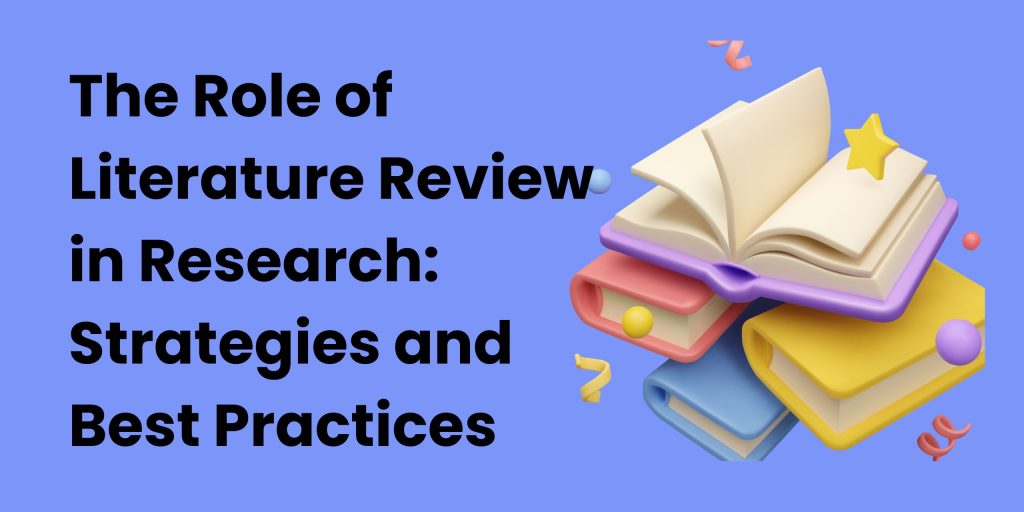The literature review is a cornerstone of academic research, serving as the foundation upon which new knowledge is built and existing knowledge is synthesized. It plays a crucial role in shaping research questions, informing study design, and contextualizing findings within the broader scholarly discourse. In this comprehensive guide, we’ll explore the significance of the literature review in research, discuss strategies for conducting a thorough and effective literature review, and provide practical insights to help students navigate this essential component of the research process.
Understanding the Role of Literature Review
Contextualizing Your Research
The literature review provides essential context for your research by synthesizing existing knowledge, theories, and findings related to your topic of interest. It helps you understand the current state of research in your field, identify gaps or controversies, and situate your study within the broader scholarly discourse.
Informing Research Questions
The literature review informs the formulation of research questions by identifying key concepts, variables, and relationships that warrant further investigation. By critically analyzing existing literature, you can refine your research focus, articulate clear objectives, and develop hypotheses that contribute to the advancement of knowledge.
Guiding Study Design and Methodology
Based on insights gained from the literature review, you can make informed decisions about study design, methodology, and data collection techniques. The literature review helps you identify appropriate research methods, sampling procedures, and analytical techniques that align with your research objectives and address the research questions effectively.
Identifying Gaps and Opportunities
One of the primary functions of the literature review is to identify gaps, contradictions, or unanswered questions in the existing literature. By pinpointing areas where knowledge is lacking or incomplete, you can position your study to fill these gaps, contribute new insights, and advance understanding in your field.
Strategies for Conducting a Thorough Literature Review
Define Your Research Scope and Objectives
Start by defining the scope and objectives of your literature review. Clarify the specific research questions or topics you aim to explore, as well as the criteria for selecting relevant literature (e.g., publication date, study design, geographic region).
Conduct Comprehensive Searches
Conduct comprehensive searches across multiple databases, journals, and sources to identify relevant literature. Use a combination of keywords, Boolean operators, and search filters to refine your searches and retrieve the most relevant and up-to-date sources.
Critically Evaluate Sources
Critically evaluate the quality and relevance of the sources you retrieve. Consider factors such as author credibility, research methodology, sample size, and publication bias. Assess the strengths and limitations of each source and its contribution to your understanding of the topic.
Synthesize and Organize Findings
Synthesize and organize the findings from your literature review into coherent themes, patterns, or frameworks. Identify common trends, conflicting findings, and areas of consensus or disagreement among scholars. Use visual tools such as concept maps, tables, or matrices to organize and visualize your findings.
Identify Gaps and Future Directions
Based on your synthesis of the literature, identify gaps, unresolved questions, or emerging trends that warrant further investigation. Consider how your study can address these gaps, build upon existing knowledge, or contribute new insights to the field.
Best Practices for an Effective Literature Review
Start Early and Stay Organized
Start your literature review early in the research process to allow sufficient time for comprehensive searches and synthesis of findings. Keep detailed records of your search strategies, search results, and notes on each source to stay organized and track your progress.
Maintain a Critical Perspective
Approach the literature review with a critical perspective, questioning assumptions, biases, and interpretations presented in the literature. Be open to alternative viewpoints and consider the implications of conflicting findings or perspectives on your own research.
Seek Feedback and Collaboration
Seek feedback from peers, mentors, or advisors throughout the literature review process. Collaborate with others in your field to exchange ideas, share resources, and identify additional sources that may be relevant to your topic.
Stay Updated
Regularly update your literature review to incorporate new research findings, publications, or developments in your field. Stay informed about recent advances, debates, and controversies relevant to your topic and adjust your review accordingly.
Conclusion
The literature review is a vital component of the research process, providing essential context, guidance, and insights for conducting rigorous and impactful studies. By conducting a thorough and effective literature review, students can clarify their research objectives, identify gaps in existing knowledge, and position their studies within the broader scholarly discourse. By following strategies and best practices outlined in this guide, students can navigate the literature review process with confidence and competence, laying the groundwork for successful research endeavors. Remember, the literature review is not just a box to check—it’s a dynamic and iterative process that contributes to the advancement of knowledge and scholarship in your field.
